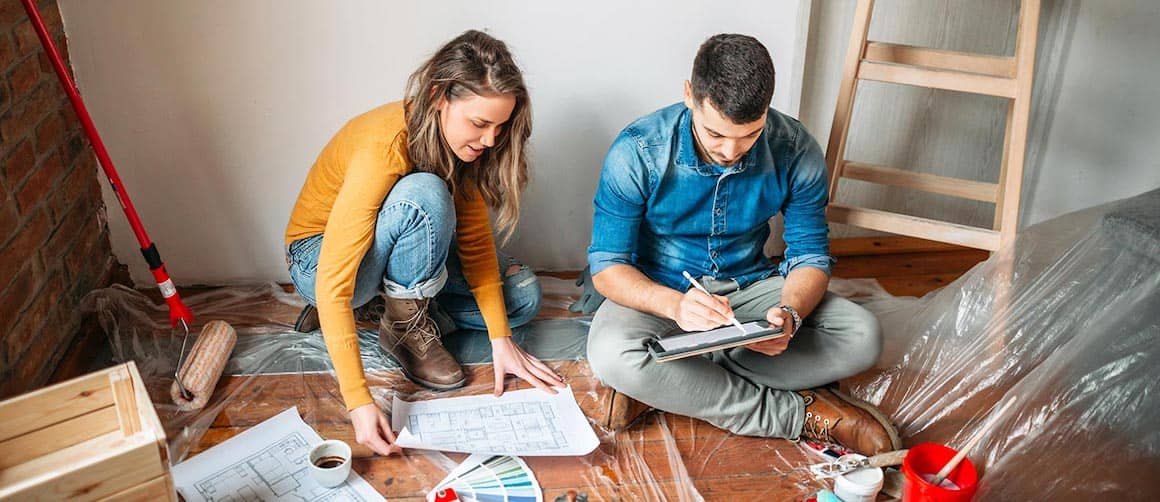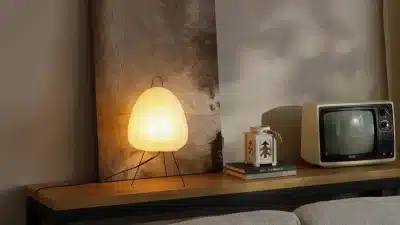
Home renovations can be daunting, but they don’t always require hiring professionals. You can complete many home projects independently with the right preparation, tools, and mindset. Here’s a detailed guide on how to do home renovations yourself, saving money while transforming your living space.
1. Planning Your Home Renovation Project
Successful home renovation starts with meticulous planning. Clearly defining your objectives ensures that every project phase aligns with your vision. Consider the following steps:
1. Establish a Budget
Include the cost of materials, tools, and an additional buffer for unexpected expenses.
2. Create a Timeline
Break down the project into manageable tasks, setting realistic deadlines for each.
3. Research Permits
Verify whether the scope of your renovation requires obtaining permits from local authorities.
4. Assess DIY Limits
Identify the tasks you can confidently handle and those that may require professional help.
A detailed plan helps prevent delays, mitigates the risk of budget overruns, and ensures compliance with local building codes, ultimately contributing to the success of your home renovation—whether you’re tackling it yourself or hiring experts known for the best custom renovations in Calgary.
2. Essential Tools and Materials for DIY Renovations
Equipping yourself with the right tools is critical to the success of any home renovation project. Below are the basic tools needed for most DIY tasks:
- Measuring tools such as a tape measure and level for precise measurements
- Power tools, including a drill, circular saw, and sander
- Hand tools like a hammer, screwdriver, and utility knife
- Personal protective equipment such as safety glasses, gloves, and masks
- Painting supplies like brushes, rollers, and drop cloths
In addition to tools, sourcing quality materials is vital. Whether installing flooring, laying tiles, or painting, having everything on hand before starting helps avoid delays.
For more inspiration and detailed guides on home renovations, check out House & Home, a resource filled with ideas and practical tips.
3. Preparing Your Space for Renovation
Properly preparing the renovation area can significantly reduce stress and ensure the project runs smoothly. Follow these steps for optimal results:
- Clear the Area
Remove furniture and cover any items damaged by dust or debris. - Protect Floors and Walls
Use tarps or plastic sheeting to shield surfaces from paint, dust, or accidental damage. - Turn Off Utilities
If the renovation involves electrical or plumbing work, ensure that the appropriate systems are safely disconnected. - Mark Work Zones
Clearly define the areas where work will be carried out to maintain organization and prevent unnecessary damage.
This preparation minimizes the risk of accidental damage and creates a safer work environment, allowing for a more efficient renovation process.
4. Demolition: Safely Removing Old Fixtures
Demolition can be a thrilling part of any renovation, but it must be cautiously approached. Before beginning, keep the following safety tips in mind:
- Check for Hidden Systems
Ensure you do not accidentally damage electrical wiring or plumbing lines. - Wear Appropriate Gear
Use gloves, masks, and safety glasses to protect yourself from dust and sharp debris. - Plan for Waste Disposal
Rent a dumpster or organize trips to a recycling facility to dispose of waste materials responsibly.
Simple demolition tasks, such as removing old cabinets or tearing down non-load-bearing walls, can generally be done without professional help.
However, consulting with a contractor for more complex demolition is advisable, especially involving structural elements.
5. Executing Key Renovations: Flooring, Painting, and Tiling
Yes, many essential renovation tasks—such as installing new flooring, painting walls, and even tiling—are well within the reach of DIY enthusiasts. Here’s how to approach these tasks:
Installing Flooring
- Laminate and Vinyl Flooring are particularly DIY-friendly due to their click-and-lock installation systems.
- Accurately measure and cut materials, paying attention to edges and corners.
- Use underlayment for better insulation and cushioning.
Painting Walls
- Prepare Surfaces by cleaning and priming them to ensure the paint adheres properly.
- Use Painter’s Tape to protect trims and edges, creating sharp, clean lines.
- Apply Multiple Coats for a professional finish, allowing adequate drying time between each coat.
Laying Tiles
- Plan the Layout before starting to ensure a visually pleasing result.
- Use Tile Spacers to keep lines uniform and level.
- Grout Carefully once the tiles have set, and clean off excess grout to achieve a polished look.
Each task may seem challenging initially, but they can be executed professionally with patience and attention to detail.
6. Safety First: Precautions for DIY Home Renovation
Safety should always be your priority when tackling home renovations. Here are some best practices to follow:
- Wear Protective Gear: Always use gloves, safety glasses, and masks when dealing with hazardous materials or using power tools.
- Follow Tool Instructions: Ensure you fully understand how to operate all tools safely and properly maintain them.
- Work with a Partner: Having someone assist you with larger projects or using ladders is wise.
- Know When to Call a Professional: If you’re unsure about electrical, plumbing, or structural work, it’s safer to consult with a licensed professional.
You can avoid accidents by prioritizing safety and ensure the renovation proceeds smoothly.
7. Knowing When to Seek Professional Help
While homeowners can successfully handle many aspects of home renovation, certain projects require professional expertise. Situations where hiring a contractor is advisable include:
- Structural Changes: Any work involving load-bearing walls or foundational modifications.
- Electrical or Plumbing Work requires licensed professionals to meet building codes and ensure safety.
- Permit-Required Projects: Check local regulations to determine if professional permits are necessary.
Understanding your limitations and when to enlist expert help will save time, prevent costly mistakes, and ensure the renovation adheres to legal standards.
8. Final Touches: Bringing Your Renovation to Life
The finishing touches are crucial in making your renovation feel complete and cohesive. Follow this checklist to wrap up your project:
- Install Trim and Molding: Add finishing touches around windows, doors, and baseboards.
- Mount Light Fixtures: Install lighting and replace outdated fixtures with modern alternatives.
- Clean Thoroughly: Remove all dust and debris to reveal your newly renovated space.
- Furnish and Decorate: Carefully select décor and furniture to complement your renovation.
Attention to these final details ensures a polished and professional outcome.
9. Staying on Budget: Cost-Effective DIY Renovations
Staying within your budget is one of the primary benefits of DIY renovations. Here are some strategies to help you stay on track:
- Repurpose Existing Materials: Reuse or repurpose materials such as cabinets or hardware where possible.
- Shop Smart: Look for discounts or sales on high-quality materials.
- DIY Labor: The more tasks you can confidently handle, the more you save on labour costs.
You can complete your renovation without financial strain by being mindful of costs at every step.
Conclusion
Undertaking a home renovation project alone is both an exciting and rewarding experience. With careful planning, the right tools, and attention to detail, you can transform your home while staying within budget. While some tasks may seem challenging, a willingness to learn and adapt will ensure your project succeeds.
However, always recognize your limitations and don’t hesitate to consult professionals for more complex tasks. Enjoy knowing you played an integral role in creating your ideal living space.









